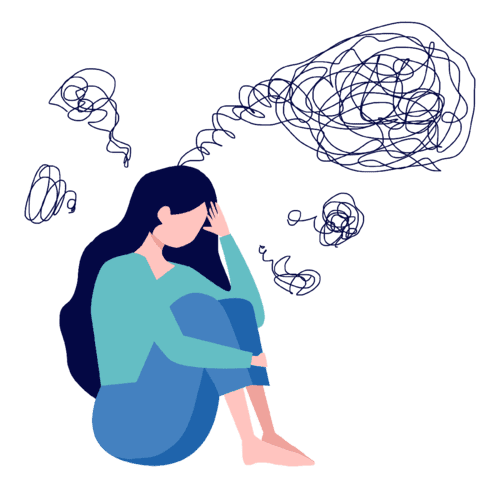Cisgender Assessment
Free Cisgender Assessment

What is Cisgender Assessment?
Cisgender assessment is a process or tool used to determine an individual’s gender identity, specifically to confirm whether they identify with the same gender they were assigned at birth. This assessment aims to understand whether a person’s self-identified gender aligns with societal expectations based on their biological sex. It typically involves questionnaires, interviews, or self-reporting methods to gather information about an individual’s gender identity. Cisgender assessment is valuable in research, healthcare, and social contexts to better understand gender diversity, ensure respectful treatment, and tailor support services. It is crucial for promoting inclusivity and acknowledging the experiences of cisgender and transgender individuals alike.
Who can benefit from this Cisgender Assessment?
A Cisgender Assessment can benefit various groups and individuals. Firstly, it can aid cisgender individuals in understanding and reflecting on their own gender identity, fostering empathy and allyship towards transgender and non-binary people. Secondly, it can be useful for educators, organizations, and healthcare providers seeking to create inclusive environments and provide appropriate support to all gender identities. Additionally, policymakers can use such assessments to inform legislation and policies that promote gender equality and rights. Ultimately, a Cisgender Assessment serves as a tool for promoting awareness, education, and inclusivity, contributing to a more equitable and accepting society for everyone, regardless of their gender identity.
Cisgender Assessment Accuracy
Cisgender assessment accuracy can vary depending on the methods and criteria used. Generally, self-identification is considered the most accurate and respectful way to determine one’s gender identity. When individuals are asked about their gender and allowed to define it themselves, the accuracy is typically high because it aligns with their deeply held sense of self. However, external assessments based on physical or social cues can be less accurate, as they may not account for an individual’s personal understanding of their gender. In sum, accuracy in cisgender assessment is best achieved through self-reporting, respecting an individual’s self-identification, and acknowledging the complexity and diversity of gender experiences.
Types of Cisgender Assessment
Gender Identity Questionnaires:
These questionnaires ask individuals to describe their gender identity and how they perceive their own gender. They may include questions about how comfortable the individual is with their assigned sex at birth, how they relate to gender stereotypes, and their overall sense of gender.
Gender Dysphoria Assessment:
While primarily used to assess transgender individuals, these assessments can also be adapted to assess cisgender individuals who may experience gender dysphoria. They inquire about any distress or discomfort individuals may feel related to their assigned sex or gender roles.
Body Image and Self-Esteem Scales:
These assessments examine how individuals feel about their bodies and how their body image relates to their gender identity. They can help identify any body image issues or self-esteem challenges related to gender.
Gender Role and Expression Inventories:
These inventories measure how individuals express their gender through behavior, clothing, and interests. They assess how individuals conform to or deviate from traditional gender roles and expectations.
Social Support and Discrimination Scales:
These assessments gauge the level of social support cisgender individuals receive from family, friends, and society as a whole. They may also assess experiences of discrimination or stigma related to gender.
Cisgender Allyship Assessments:
These assessments aim to measure an individual’s understanding of and support for transgender and gender-diverse individuals. They may include questions about knowledge of transgender issues, attitudes, and behaviors related to allyship.
Handling Cisgender Issues
Handling cisgender issues involves creating a respectful and inclusive environment for individuals whose gender identity aligns with the sex they were assigned at birth. While cisgender individuals typically don’t face the same level of discrimination and challenges as transgender individuals, there are still important considerations to ensure equality and understanding for everyone. Here are some steps and points to consider when addressing cisgender issues:
- Educate and Raise Awareness: Educate people about the concept of cisgender identity. Many cisgender individuals may not be familiar with the term or its significance. Increasing awareness can foster understanding and empathy.
- Language and Pronouns: Respect everyone’s preferred pronouns, regardless of their gender identity. This includes cisgender individuals. Using the correct pronouns helps create an inclusive atmosphere and demonstrates respect for everyone’s identity.
- Avoid Stereotyping: Just as it’s important not to stereotype transgender individuals, avoid making assumptions or generalizations about cisgender individuals based on their gender. People are diverse, and their experiences vary.
- Gender Norms and Expectations: Address and challenge harmful gender norms and expectations that can affect cisgender individuals. Encourage open discussions about the pressures and expectations they might face due to societal gender norms.
- Mental Health and Well-being: Recognize that cisgender individuals can also experience mental health challenges related to body image, self-esteem, and societal pressures. Provide resources and support to address these issues.
- Intersectionality: Understand that cisgender individuals come from diverse backgrounds and may have intersecting identities related to race, ethnicity, sexuality, ability, etc. Consider how these factors might impact their experiences.
- Inclusive Spaces: Ensure that all spaces, including workplaces, schools, and public facilities, are welcoming and inclusive for cisgender individuals. This involves creating policies that prevent discrimination based on gender identity and fostering a culture of respect.
- Allies and Advocacy: Encourage cisgender individuals to be allies and advocates for transgender individuals. Support for the transgender community from cisgender allies can be powerful in promoting understanding and equality.
- Educational Initiatives: Implement educational initiatives that focus on gender diversity, not just for transgender individuals, but for cisgender individuals as well. This can help dismantle biases and misconceptions.
- Representation: Promote diverse representation of cisgender individuals in media, leadership roles, and other platforms. This helps challenge stereotypes and provides role models for everyone.
- Listening and Learning: Create opportunities for cisgender individuals to listen to the experiences and stories of transgender individuals. This can foster empathy and understanding.
- Support Transgender Advocacy: Recognize that cisgender individuals can play a role in advocating for transgender rights and equality. Supporting these efforts helps create a more just society for everyone.
Remember, the goal is to create a world where all individuals, regardless of their gender identity, can live authentically and without discrimination. By acknowledging the unique experiences of cisgender individuals and working to address their challenges, we can contribute to a more inclusive and equitable society for everyone.

